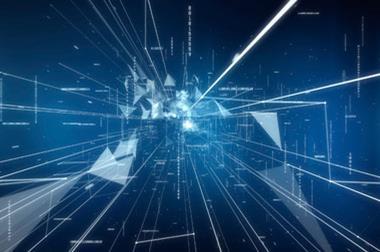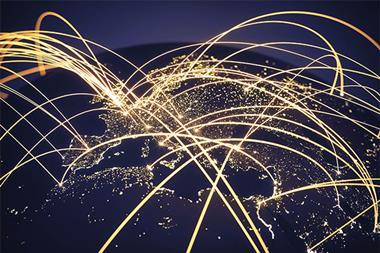As computers get faster, we get smarter. Chris Corless outlines three key ways he sees technology improving the way we see and mitigate risk.
This is one of my favourite topics of late and one that I have written about before in an interview with another StrategicRISK contributor Gareth Byatt. Today there is a myriad of ways for technology to enable risk management and mitigation, and the options will continue to grow as our computing power gets faster and we get better at utilising the internet of things, machine learning and artificial intelligence. Here, I will focus on three key areas I see technology making the most difference:

Decision-making: Computers just know more
The world in which we do business is becoming more interconnected and more volatile, and moves more quickly than ever before. This, combined with all of our human biases, makes good decision-making even more challenging. Thankfully as our computing capability grows, our ability to model the complex world and run scenarios based on vast real-time data will improve. I believe machine learning and artificial intelligence will help build these models, analyse the results and improve the models based on analysis of the results evolving to make better and better decisions. Today when a company is deciding on whether to expand into a new country or to stay in a country, a mixture of analysis, modelling and opinions is utilised. In the future, I can see a time when we have advanced near real-time models at our disposal will dominate decisions of where and when it is best to increase or decrease investment into specific countries, and the models will continuously improve themselves. Certainly, this type of work is already happening, but I see the complexity and self-learning capability of these models only increasing over time becoming more widely applicable across industries.
Control effectiveness: Let computers anticipate for you
Many businesses face preventable operational risks. Organisations often spend significant resources to try to detect problems with control so that they can be remediated before an event is experienced. Traditionally these efforts have been largely through various types of periodic, people-based audits, which have often resulted in less than perfect results, even sometimes in spectacular company-ending ways. Here again, we can use technology to develop electronic sentinels that can detect problems promptly and automatically alert appropriate people to fix the problem. In time, technology might even be able to provide suggestions on how best to respond to the problem or even implement the best solution and monitor its ongoing effectiveness. Today many organisations face significant risks related to safety. In the future, we will be able to ask our electronic assistant what the status of the controls associated with these risks is and when there is a problem ask the assistant for the best solution to bring the control back to a more effective level. The key here is that the technology can detect the problems in a more timely and reliable manner, and overcome our limits as humans when it comes to parsing data and analysis to determine the best solution.
Control performance: We’re only human
Finally, I think we are going to see technology more and more take over activities that we as humans had a poor track record of performing reliably. Much of the risk that we face in organisations is caused by humans and so where possible we will continue to see technology take over from people. As drivers, we like to think that we are perfect behind the wheel. Yet statistics show it is inevitable that a fraction of us won’t make the best decision, which leads to loss of life. The last decade has seen a series of technologies come into our cars that help reduce or eliminate many of these behaviours – and the ultimate technology to solve the problem will, of course, be fully autonomous vehicles. Autonomous vehicles have the potential to significantly reduce injuries and fatalities, not to mention the additional potential to improve resource productivity and reduce environmental impacts. As much as I hate to admit it, the days of being a driver could be coming to an end.
While the technology is providing tremendous improvements to how we think about risk management and control, it is important to remember it is also introducing risks that we haven’t previously been exposed to, or in some cases concentrating risks and increasing potential impacts. For example, many mining operations have created centralised remote operating centres where most mine operations are controlled centrally, sometimes thousands of kilometres from the physical operation. This technology has enabled tremendous uplifts in operational efficiency but has also heightened the degree of risk associated with network communications, technology security and general disaster recovery. With remote operating centres these types of risks have the potential to stop entire regions from operating dramatically increasing the potential impacts.
In my opinion, as technology changes the face of our society, it will also change the associated risks we face and more excitingly how we manage them.





















No comments yet